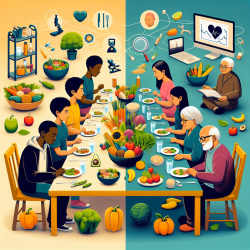Introduction
In the quest for inclusivity and diversity within STEM fields, understanding cultural nuances is crucial. The underrepresentation of Native Americans in STEM is a complex issue influenced by cultural taboos, as highlighted in the research article "Cultural taboos as a factor in the participation rate of Native Americans in STEM." This blog explores how practitioners can enhance their approach by integrating the findings of this research, ultimately fostering a more inclusive educational environment.
Understanding the Impact of Cultural Taboos
The research reveals that cultural taboos significantly impact Native American students' participation in STEM. A survey conducted among 96 students from 42 tribes found that 38% would avoid a science major if it required violating important tribal taboos. Activities such as human and animal dissection were particularly problematic, with 50% of respondents identifying human dissection as a taboo.
These findings underscore the need for educational institutions to recognize and respect cultural beliefs, which can be a barrier to STEM participation. By acknowledging these taboos, educators can create a more welcoming environment for Native American students.
Practical Steps for Practitioners
To improve outcomes for Native American students in STEM, practitioners can implement several strategies:
- Curriculum Adaptation: Modify curricula to respect cultural taboos. This could involve offering alternative assignments or using virtual simulations instead of physical dissections.
- Engage with Native Communities: Collaborate with local tribes to understand specific cultural taboos and incorporate their perspectives into the educational framework.
- Cultural Sensitivity Training: Provide training for educators to enhance their understanding of Native American cultures and the significance of taboos.
- Inclusive Learning Environments: Foster an environment where students feel safe to express their cultural identities without fear of discrimination or disrespect.
The Broader Implications
Increasing Native American participation in STEM is not only a matter of equity but also enriches the field with diverse perspectives. Diverse teams have been shown to enhance problem-solving, creativity, and innovation. Moreover, empowering Native Americans in STEM can help address historical injustices and ensure their voices are represented in scientific discourse.
Conclusion
Addressing cultural taboos in STEM education is a critical step towards inclusivity and diversity. By implementing the research findings, practitioners can create a more supportive environment for Native American students, encouraging their participation and success in STEM fields.
To read the original research paper, please follow this link: Cultural taboos as a factor in the participation rate of Native Americans in STEM.










